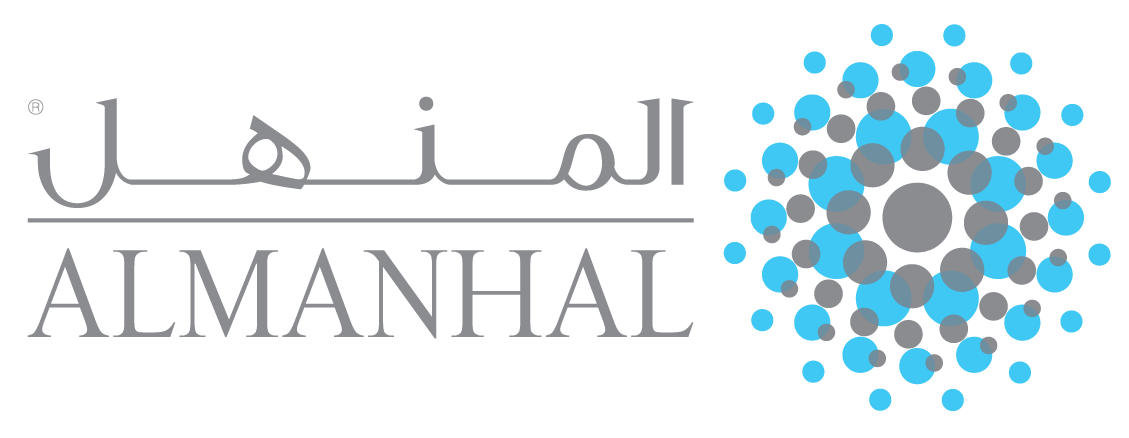Financing Sovereign Developmental Activities Through Non-Interest Bearing Instruments
DOI:
https://doi.org/10.31436/jif.v5i1.97Abstract
It is well established that countries require investments in infrastructure, education, healthcare and institutional development for long term growth in income levels. However, due to the positive externalities associated with these sectors and issues such as non-excludability and non-rivalry, participation from private sector in these areas is generally inadequate and it becomes necessary for the state to intervene for optimal capital allocation. Generally, the quantum of funds required for nationwide developmental programs exceeds the resources that states can generate through one-time taxation and shortfalls are usually sourced from debt markets. Sovereign borrowing has recently attracted attention given the deteriorating credit quality of some nations resulting from heightened borrowing during the financial crisis. From an Islamic perspective, interest based borrowing is classified as a transaction based on riba, and therefore forbidden, by an overwhelming majority of scholars. This paper attempts to understand developmental activities pursued by governments and to explore alternative approaches to finance such activities without resorting to interest bearing instruments. Such alternatives include public-private partnerships, tax incentives, developing Corporate Social Responsibility (CSR) programs, auctioning scarce resources, and sovereign divestments.
Downloads
References
Alesina, A. & Wacziarg, R., 2003. Fractionalization. Journal of Economic Growth. 8, 2003, pp. 155-94.
Alfaro, L. & Kanczuk, F., 2009. Optimal Reserve Management and Sovereign Debt. Journal of International Economics, 77 (1), 2009, pp. 23-36.
Anon., 2011. Barroso: Europe 'closer to resolving eurozone crisis'. Available at: http://www.bbc.co.uk/news/world-europe-15478358 [Accessed April 01, 2016].
Anon., 2011. CCI calls for tax cuts to boost local manufacturing. Available at: http://www.abc.net.au/news/2011-08-24/cci-calls-for-boost-to-local-jobs/2853204 [Accessed April 01, 2016].
Arthur & Sheffrin, S. M., 2003. Economics: Principles in Action. Upper Saddle River: Pearson Prentice Hall.
Bozionelos, N. & Nikolaou, I., 2010. Happiness Around the World: Is There More to It Than Money?. Academy of Management Perspectives, 24 (4), 2010, pp. 96-98.
Brunori, D., 1997. Principles of Tax Policy and Targeted Tax Incentives. State and Local Government Review, 29(1), 1997, pp. 50-61.
Bulow, J. I. & Rogoff, K., 1989. Is to Forgive to Forget?American Economic Review, 79(1), 1989, pp. 43-50.
Carbajal, S. L., 2012. Public-Private Partnerships for Private Sector Development: Shifting the Perspective of State Involvement, Kent: http://www.academia.edu/1905920/Public-Private_Partnerships_for_Private_Sector_Development_Shifting_the_Perspective_of_State_Involvement.
Carbajal, S. L., 2012. Public-Private Partnerships for Private Sector Development: Shifting the Perspective of State Involvement, Kent: University of Kent – Doctoral Dissertation.
Chantrill, C., 2012. U.S. Government Spending.
Available at: http://www.usgovernmentspending.com/total_spending_2012USrn [Accessed April 01, 2016].
CIA, 2012. The World Factbook - Country Comparison - Public Debt. Available at: https://www.cia.gov/library/publications/the-world-factbook/rankorder/2186rank.html [Accessed April 01, 2016].
CIA, 2012. The World Factbook - Country Comparison Budget Surplus/Deficit. Available at: https://www.cia.gov/library/publications/the-world- [Accessed April 01, 2016]
Clement, D., Lehman, M., Hamrin, J. & Wiser, R., 2005. International Tax Incentives for Renewable Energy: Lessons for Public Policy, San Francisco, California: Center for Resource Solutions.
Cruces, J. J. & Trebesch, C., 2011. Sovereign Defaults: The Price of Haircuts. CESifo Working Paper, No. 3604, Munich.
Department of Economic Affairs, Government of India, 2011. Public Private Partnership. Energy Capital Group, 2013. Tax Benefits of Oil and Gas Drilling: Energy Capital Group. Available at: http://www.encapgroup.com/taxbenefits/ [Accessed April 01, 2016].
Farooq, D. M. O., 2005. The Riba-Interest Equation and Islam: Re-examination of the Traditional Arguments. Available at: http://globalwebpost.com/farooqm/study_res/default.html [Accessed April 01, 2016]
Frankel, J. A. & Romer, D., 1999. Does Trade Cause Growth? The American Economic Review, 89 (3), 1999, pp. 379-399.
Frischmann, B. M., 2012. Infrastructure:The Social Value of Shared Resources. New York: Oxford University Press.
Frost & Sullivan, 2012. PPP MODEL: The way forward for Infra Growth, Frost & Sullivan.
Gallup, J. L., Sachs, J. D. & Mellinger, A. D., 1999. Geography and Economic Development. International Regional Science Review, 22, 1999, pp. 179-232.
Goldfarb, Z. A., 2011. Available at: http://www.washingtonpost.com/business/economy/sandp-considering-first-downgrade-of-us-credit-rating/2011/08/05/gIQAqKeIxI_story.html [Accessed April 01, 2016].
Graham, D. A., 2010. No Great Sheiks. Available at: http://www.thedailybeast.com/newsweek/2010/03/11/no-great-sheiks.html [Accessed March 05, 2014].
Guembel, A. & Sussman, O., 2009. Sovereign Debt without Default Penalties. Review of Economic Studies, 76(4), 2009, pp. 1297-1320.
Harris, C., 2003. Private Participation in Infrastructure in Developing Countries, Washington DC: The International Bank for Reconstruction and Development / The World Bank.
Irwin, G. & Thwaites, G., 2008. Efficient frameworks for sovereign borrowing. Bank of England Quarterly Bulletin, Available at: http://www.bankofengland.co.uk/research/Documents/workingpapers/2008/WP343.pdf [Accessed 01 April 2016]
Kamalodin, S., April 2011. To default, or not to default:What are the economic and political costs of sovereign default?., Utrecht The Netherlands, Rabobank Economic Research Dept, pp. 1-14.
Karayalcin, C., McCollister, K. & Mitra, D., 2002. Infrastructure, returns to scale and sovereign debt. Journal of International Trade & Economic Development, 11(3), 2002, pp. 267-278.
Kenny, C., 2005. Does Development Make You Happy? Subjective Wellbeing And Economic Growth In Developing Countries. Social Indicators Research, 73 (2), 2005, pp. 199-219.
Khoury, S. J., 1985. Sovereign Debt: A Critical Look at the Causes & the Nature of the Problem. New York: Wiley.
Knack, S. & Keefer, P., 1997. Does Social Capital Have an Econpmic payoff? The Quarterly Journal of Economics, 112, 1997, pp. 1251-1288.
Lindert, P. H. & Morton, P. J., 1989. How Sovereign Debt Has Worked. In: Developing Country Debt and Economic Performance: The International Financial System. Chicago: University of Chicago Press, pp. 39-106.
Mankiw, N. G., Romer, D. & Weil, D., 1992. A Contribution to the Empirics of Economic Growth. The Quarterly Journal of Economics, 107 (2), 1992, pp. 407-432.
Michigan Policy Network, 2011. Business Tax Credits: Useful Tools or Corporate Welfare? Michigan Policy Network. Available: http://www.michiganpolicy.com/index.php/taxes-background/policy-briefs-8/1102-business-tax-credits-useful-tools-or-corporate-welfare [Accessed April 01, 2016]
Mueller, K. P., n.d. Tax benefits of funding scholarship.
Available at: http://www.nj.com/business/index.ssf/2010/07/tax_benefits_of_funding_schola.html [Accessed April 01, 2016]
Regan, M., 2009. A Survey of Alternative Financing Mechanisms For Public Private Partnerships, Bond University. Available at
http://infrastructureaustralia.gov.au/policy-publications/publications/files/MichaelReganReport.pdf [Accessed April 01, 2016]
Reinhart, C. M. & Rogoff, K. S., 2008. Domestic Debt: The Forgotten History. NBER Working Paper 13946. Available at http://www.nber.org/papers/w13946 [Accessed April 01, 2016)
Richards, P., 2009. Tax Benefits of Owning and Using Solar Panels at Home.
Available at: http://ezinearticles.com/? [Accessed 01 April 2016].
Rittenberg, Libby & Tregarthen, Timothy, 2012. Principles of Microeconomics, Version 2.0. Washington, D.C.: Flat World Knowledge, Inc.
Ruggiero, J. G., 1995. Essays on the measurement and causes of inefficiency in the public sector with application to education, New York: Available at http://surface.syr.edu/ecn_etd/65/. [Accessed April 01, 2016]
Sala-I-Martin, X., Doppelhofer, G. & Miller, R. I., 2004. Determinants of Long-Term Growth: A Bayesian Averaging of Classical Estimates (BACE) Approach. American Economic Review 94 (4), 2004, pp. 813–835.
Siddiqi, M. N. N., 1992. An Overview of Public Borrowing in Early Islamic History. Kuala Lumpur, Malaysia, Available at : http://www.irti.org/English/Research/Documents/IES/146.pdf [Accessed on April 01, 2016]
Sturzenegger, F. & Zettelmeyer, J., 2007. Debt Defaults and Lessons from a Decade of Crises. Cambridge, MA: MIT Press.
Surrey, S. S., 1970. Tax Incentives as a Device for Implementing Government Policy: A Comparison with Direct Government Expenditures. Harvard Law Review, 83(4), 1970, pp. 705-738.
Symonds, T., 2003. Preparing for congestion. Available at:
Available at: http://news.bbc.co.uk/2/hi/uk_news/2748319.stm [Accessed April 01, 2016]
The National Council for Public-Private Partnership,. Types Of Public-Private Partnerships.
Available at: http://www.ncppp.org/howpart/ppptypes.shtml [Accessed April 01, 2016].
UNESCAP, 2013. Roles of Government in Supporting CSR. Available at: http://www.unescap.org/tid/publication/indpub2565_chap4.pdf [Accessed April 01, 2016].
Wroblowsky, T., Sep 2011. Government Debt Default: Past, Present and Future. Ostrava. Available at:
http://www.ekf.vsb.cz/export/sites/ekf/frpfi/en/conference_proceedings/prispevky_plne_verze/Wroblowsky.Tomas.pdf [Accessed April 01, 2016]












